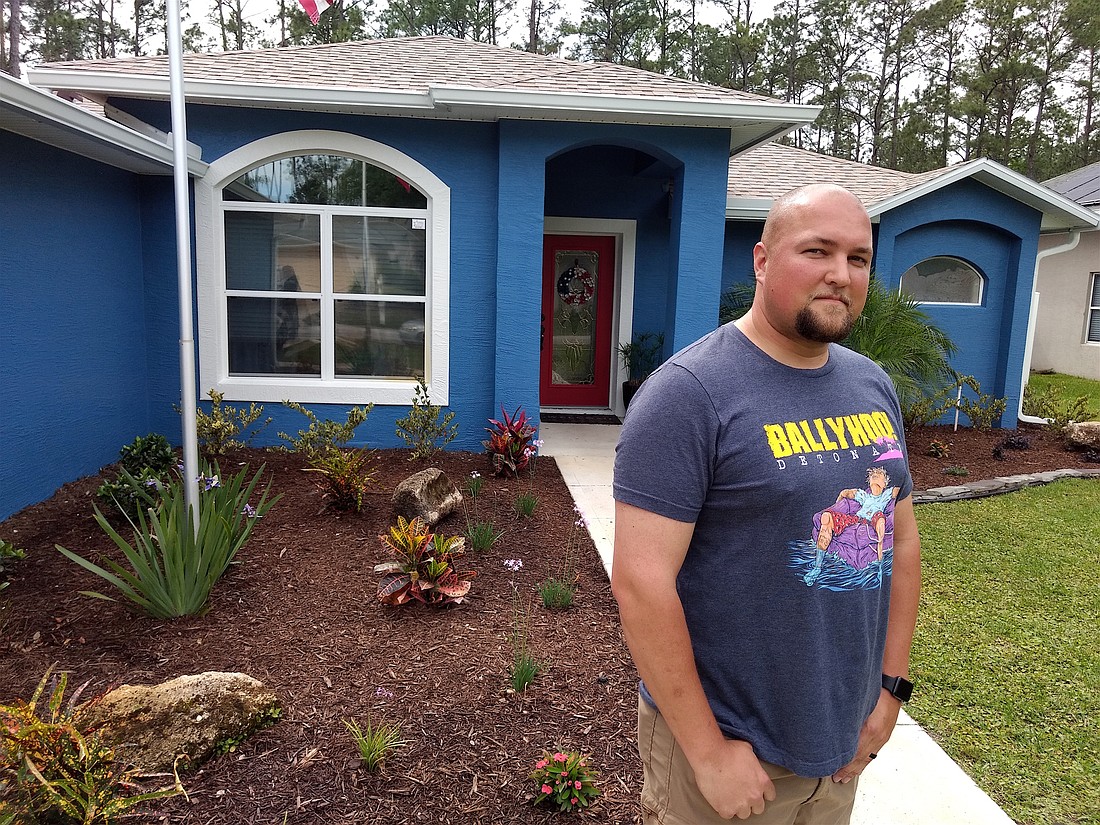- December 14, 2025

Bryan Denker is a deputy with the Flagler County Sheriff’s Office. He’s a medically retired Air Force staff sergeant. He also recently made a big mistake: He painted his house the wrong color.
And he knows it. He went to the March 19 Palm Coast City Council workshop and waited for five hours — from 9 a.m. to about 2 p.m. — in a suit and tie, for a chance to ask the council for leniency.
“Residents chose to live here because they liked the restrictions. They like that you can drive around, and you get a sense of uniformity.”
Milissa Holland, mayor
When he got his chance, he told Mayor Milissa Holland and the rest of the council that his home had been donated to him by Building Homes for Heroes. That same organization later paid for renovations, including having his house painted. But the contractor he hired was from Port Orange, and no one verified that the house color was within the appropriate range of LRV, or light reflectance value, for the city of Palm Coast.
For walls and garage doors, Palm Coast requires an LRV of 80 or greater, which means light or pastel colors. The Land Development Code also allows “earth tones,” which are “shades of brown, brown-taupe or sandy-taupe, beige, terra cotta, olive, sage and gray. Acceptable earth tone shades shall have a LRV of 25 or greater.” Also prohibited: “colors that are deemed loud, clashing or garish, as determined by the Land Use Administrator.”
Denker’s house was painted a blue color with an LRV of 15, he said, which is one row of paint tiles too low on the Sherwin-Williams display from which he chose it.
Denker was told at the March 19 meeting that staff, not the council, had the authority to enforce the code, and he was not given a variance. In fact, no variances are ever given, according to city spokeswoman Cindi Lane. But, Denker did get an extra month to come into compliance.
Repainting, he said, will cost him about $2,000. Building Homes for Heroes was kind enough to offer to fix the problem, but Denker declined.
“I’m not going to have them repaint my home,” he said. “That’s embarrassing.” He’s the one who failed to double check the color, so he’ll pay for it himself, he said.
Holland has reached out to Denker and hopes to raise private money to help him pay for it because she respects his work as a first responder and as a veteran. But Denker responded that he’d prefer any money raised be donated to Building Homes for Heroes instead.
The experience has three raised questions in Denker’s mind about code enforcement.
First, why is the city so strict about appearances?
“Code should be about health and safety, not opinions,” he said in an April 9 interview outside his home. “Objective, not subjective.” He feels that the city acts too much like a homeowners association and that many people who move into the city wouldn’t ever think there would be rules governing things like the color of a home.
Holland said in an April 9 interview that Denker’s error isn’t cause to change the rules on house colors.
“Residents chose to live here because they liked the restrictions,” she said. “They like that you can drive around, and you get a sense of uniformity.”
Second, why is there no such thing as a variance?
As a sheriff’s deputy, he said, he has discretion as to whether to write someone a ticket. “How can my City Council have no discretion in color?” he asked.
Third, why are anonymous calls allowed?
“That’s what bothers me the most,” he said. “There’s no victim. Somebody was just offended by my color.”
The water tower also continues to irk Denker. Its shade of blue is too dark, according to the code. Why is that allowed?
According to Lane, it’s grandfathered in because it existed before the code went into effect. So when it was repainted in recent years, it was allowed to retain its distinctive blue color. It’s a great color in Denker’s opinion. He liked it so much that he picked one very similar for his home — only his is a bit lighter.